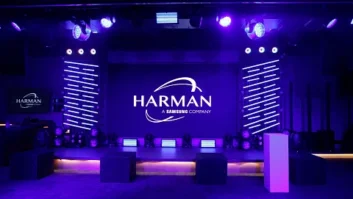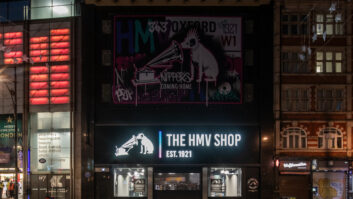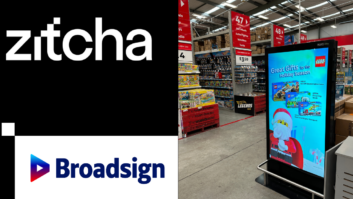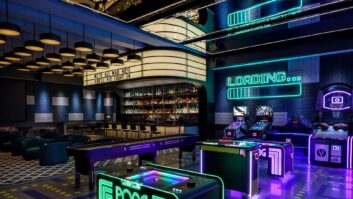
There is an abundance of innovative technologies at the disposal of retailers looking to improve customer engagement. However, knowing which solutions are suitable for deployment and will bring tangible results is no easy task.
The challenge laid down by the online sector has hit ‘bricks and mortar’ retail, but the multitude of personalised and contextual solutions on offer provides it with the opportunity to adapt. “Online companies have impacted the industry and changed the way consumers shop, but this doesn’t mean the in-store experience is no longer,” notes Scott Brothers, VP, business development at analytics and intelligence solutions provider Oncam.
“Embracing change is important and retail is being positively affected by the development of smarter technology right now,” he adds. “Mass adoption of new technologies has dramatically influenced the way consumers shop and created new ways to browse and purchase.”
As retailers have shifted towards making shopping more entertaining for the customer and less transactional, a number of technologies have emerged to provide a more dynamic experience and generate more accurate data to streamline the customer’s search.
The aim for retailers is to turn casual shoppers into brand advocates and build up loyalty through experiences that promote personalisation and connectivity. The technologies at the forefront of the drive to create more dynamic customer experiences and encourage shoppers in-store include Bluetooth beacon technology, facial recognition and physical cookies.
Florian Rotberg, MD at invidis consulting, highlights the challenges of personal communication in retail spaces: “For years the industry has tried out various personal solutions, but hasn’t found the holy grail yet. But many new solutions like beacons, facial recognition or other sensors have entered the retail space. Most of them enable the network owner to identify shoppers, connect and address them with a personal message – on the public screen or, in the best case, on a mobile phone.”
Beacon technology utilises Bluetooth Low Energy to send offers and personalised deals through mobile apps, based on the in-store location of the customer. Retailers can use beacons to navigate shoppers through a store to find what they want, while building a relationship with them by delivering personalised offers and rewards. However, a potential issue with the technology is that as more retailers use it, shoppers could get bombarded with offers from different brands.
Rotberg elaborates: “Technically speaking, beacons are a fantastic solution. They are very cheap, run independently on batteries for up to two years, and they are very small and therefore easy to hide. But a beacon is worthless without an app and the permission of the user to push messages on his phone. And that exactly is the bottleneck: most consumers fear getting spammed and therefore reject the permission.”
Mark Childerhouse, senior account manager at retail integrator Pioneer Digital, counters: “Google’s Eddystone beacon is paving the way for future developments, as it doesn’t require a Bluetooth connection or for consumers to download a brand’s mobile app to be used.”
Another area of retail tech that provides many of the same benefits of Bluetooth beacons is ‘physical cookies’; these do not harvest people’s personal data, as there is no need to download apps or sign-up for services. These devices enable the retail space to react to a customer’s behaviour with data analysed in real time and linked to digital signage, which will show deals tailored to the user’s interests. Currently embedded in keyrings to make them easy to carry, the technology can be adapted to other objects.
Perhaps the most contentious technology in retail is facial recognition. Its roots lie in sectors such as airport security, law enforcement and casinos, so it is unsurprising that customers may have reservations about whether they are sacrificing anonymity without knowing it, and how secure the information is from hackers. It also brings with it questions over exactly which uses retailers can put it to.
Retailers find facial recognition useful, as it provides detailed analytics on traffic flows and customers’ responses to product displays. It can also be used to identify shoplifters, for targeted marketing and to recognise VIP customers, a use mainly in high-end fashion retailers and hotels. It offers significant upsides for brands; however, accomplishing the desired results requires considerable investment, with a large number of cameras needed as well as separate servers.
Getting it right
The technology itself is only one part of the equation, however; proper deployment is just as crucial. Steve Blyth, CEO of interactive solutions agency Engage Works, comments: “Successful deployment of these technologies is interconnected and seamless, bringing together both the online and offline shopping experience. It is also successfully employed to enhance personalisation, a key factor in engaging customers. When deployed in a smart and strategic way, new technologies can build and create emotional experiences between the brand and customer, which leads to brand loyalty and in turn, improved sales.”
However, Oncam’s Brothers suggests integrators and vendors should strike a balance between ‘selling’ retailers technologies that aren’t always proven, and waiting too long and risking being left behind by the competition. “Vendors and installers have at times been their own worst enemies by throwing out buzzwords like facial recognition, smart fitting rooms and big data,” he says. “They are all very real technologies, but not all are applicable to every retailer and certainly not all are realistically available as an off-the-shelf integrated solution which can be quickly deployed.
“It’s crucial with these advanced technology solutions to consider how the retailer will use them. If you are only providing data then the retailers may not have the resource in-house to best exploit it, and end up not seeing a great return on investment.”
Obstacles to the successful implementation of these technologies often result from retailers not understanding the best way to use them, as well as shoppers’ reservations about privacy. Blyth explains: “Existing barriers tend to stem from bad use of technology. In the past, some retailers have used technology for the sake of using it, and not necessarily to improve the customer and product relationship. When technology isn’t deployed in a way that benefits the consumer, this can actually hinder the formation of such relationships. Using tech for the sake of it is often more harmful than not using it at all.”
What’s next?
While the current class of technology has the ability to upgrade in-store shopping experiences, there are a number of solutions around the corner that could further enhance the level of personalisation retailers can offer.
“We will certainly see more cases for artificial intelligence (AI) and robotics being used in a retail environment,” says Blyth. “We will also see interaction based upon voice recognition and touch recognition, as well as more interactive kiosks popping up in new locations, making shopping on the go easier.”
Jason Cremins, founder and CEO, Signagelive, says: “Mobile and wearable technology, sentiment and proximity measurement and RFID are all inputs that we can work with to deliver personalised experiences for retail customers. In addition, external factors including weather, stock availability, loyalty schemes and online profiling all ensure that the content displayed to the customer is personalised to their needs.”
“There are currently advanced developments being made in biometric technologies to supply statistical information for analyses of behaviour and engagement and its combination with digital signage to give more relevant insight to businesses on who’s shopping there,” offers Childerhouse. “This could look like more intelligent software running anonymous facial analysis, which is able to then use this information to trigger predetermined content for specific demographics.”
While, as we’ve seen, there are hurdles to successful deployment, the considered use of appropriate cutting-edge tech could prove decisive as traditional retailers continue to fight the dominance of online competitors. As solutions are honed and adapted to suit different environments, there is the possibility that retailers can not only claw back some lost business, but also attract new customers and develop a new form of brand loyalty – based not only on the quality and price point of the products but on the entire in-store experience.
www.engageldn.engageworks.com
www.invidis.de
www.oncamgrandeye.com
www.pioneergroup.co.uk
www.signagelive.com







